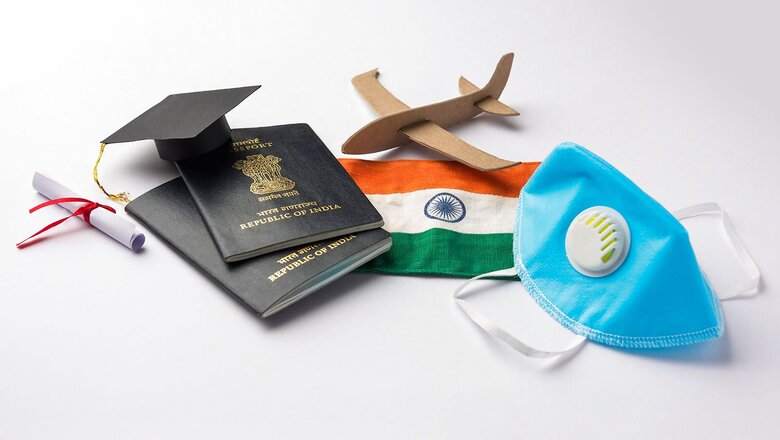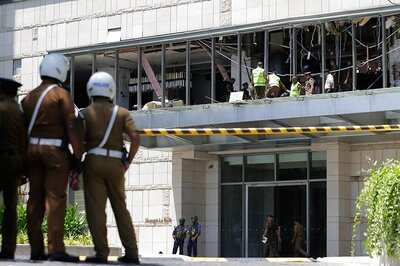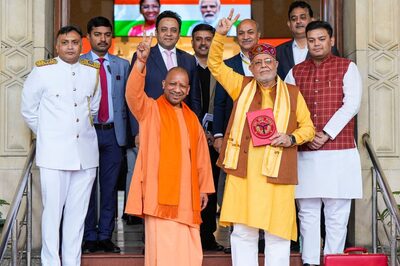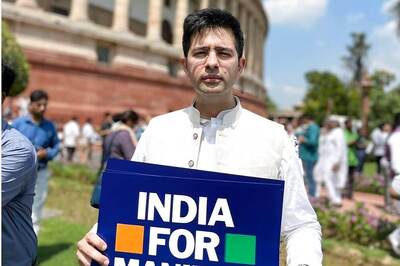
views
Ask any grandparent today about the seachange in healthcare in India, and you’ll see their faces light up. It wasn’t very long ago that Indians left for western shores when confronted with diseases or conditions that needed complicated surgery, or experimental treatments.
And now, the world comes to India for treatment. The Indian healthcare industry is making its presence felt across the globe, as a high quality and economically viable alternative, at a time when quality medical attention is becoming increasingly difficult to come by in the west.
The Healthcare industry in India comprises of hospitals, medical devices, clinical trials, outsourcing, telemedicine, medical tourism, health insurance, and medical equipment. Growing incidence of lifestyle diseases, rising demand for affordable healthcare delivery systems, technological advancements, emergence of telemedicine, rapid health insurance penetration and government initiatives like e-health (with tax benefits and incentives) are driving the healthcare market in India.
India’s healthcare industry outlook
In 2020, the Indian Healthtech industry was valued at $1.9bn. It is expected to grow to $5bn in just 3 years, by 2023. We see similar trends in the diagnostics market, which is growing at a CAGR of 20.4% to reach $32 bn in 2022, from just $5 bn in 2012. Telemedicine is expected to touch $5.4 Bn by 2025, and the National Digital Health Blueprint is expected to unlock an additional economic value of over $200bn in the next 10 years.
If those numbers weren’t eye popping enough, the Healthcare industry in India, overall, is projected to reach $372 bn by 2022. India is already the world’s pharmacy. And now, the Government’s 2022-23 Union Budgetary allocation of Rs.86,200 crores for the Ministry of Health and Family Welfare is going to go the distance in prepping India’s healthcare infrastructure for the growth expected in Medical Value Travel (MVT).
At the moment, India is ranked 10th on the Medical Tourism Index (MTI) for 2020-21. What drives this is a combination of infrastructure and human capital. India offers the largest pool of doctors and paramedics with high-quality medical training, along with fluency in English. India boasts of the largest number of medical colleges in the world, and expects to have a pool of 1mn skilled healthcare providers by 2022. And now, under the National Accreditation Board for Hospitals & Healthcare Providers (NABH), over 1400 hospitals have been deemed to provide care at par or above global standards.
The Government of India is dedicated to cement India as the world’s leading hub for Medical and Wellness Tourism, inviting the world to Heal in India with the mandate of ‘Seva’ coupled with ‘Atithi Devo Bhava’. Among these initiatives, is the one step MVT portal, which aims at creating a seamless experience for medical travellers to India by catering to their journey end-to-end.
Patients and caregivers are able to search for providers on the basis of procedures, cities, hospitals and even particular doctors. They are able to access transparent pricing packages online, not just for allopathy and integrated medicine, but for traditional Indian systems of medicine as well. They are also able to make their travel arrangements through NABH empanelled MVT Facilitators.
Foreigners can undertake Medical Value Travel to India, under three categories:
- Medical Treatment: Treatment for curative purposes including surgeries, organ transplants, joint replacements, cancer and chronic disease treatments,
- Wellness & Rejuvenation: Offerings focused on rejuvenation or for aesthetic reasons such as cosmetic surgery, stress relief, spas
- Traditional Medicine: India’s traditional systems of medicine, covered under the Ministry of AYUSH (Ayurveda, Yoga & Naturopathy, Unani, Siddha and Homeopathy).
What drives Medical Value Travel to India?
For starters, the financial savings are immense. India is delivering world-class care and treatment at lower costs, with savings of ~65-90% as compared to the US. The combination of high quality and low cost makes India an attractive destination for westerners who may find high wait times or prohibitive costs for the same procedures in their home countries.
Indian hospitals have invested heavily in cutting edge technologies like the latest advancements in robotic surgeries, radiation, cyberknife stereotactic options, IMRT/IGRT, transplant support systems, etc. India is also home to some of the most renowned super-specialty hospitals and medical services that provide patients with the latest and most advanced treatment options using the latest technologies such as Artificial Intelligence (AI), Virtual Reality (VR) and holistic medicine.
Another reason that India is an attractive destination for medical treatment is the variety of options available. India is the focal point of Ayurveda, Yoga & Naturopathy, Unani, Siddha, and Homeopathy, all of which have now been brought under the aegis of the Ministry of AYUSH, and have been regulated to deliver consistent patient experience. Yoga ashrams, spas and wellness centres that offer holistic therapies also attract the wellness minded medical tourist.
The most critical factor that brings patients and their caregivers to India, however, is the assurance of quality. India’s National Medical and Wellness Tourism Board has been constituted under the Chairmanship of the Minister for Tourism to provide a dedicated and comprehensive institutional framework that promotes and enhances medical tourism – including Indian systems of medicine. The Board acts as the umbrella organisation that governs and promotes medical tourism, with representations from the Ministry of AYUSH, and the NABH.
India’s Quality Movement
India recognised the need to monitor quality activities, particularly in the context of patient safety. The Quality Council of India (QCI) has played a pivotal role in shaping the quality movement in India for the last 25 years by assuring quality standards of our goods, and certifying products in several sectors. As a result of a question raised in the Parliament of India, the NABH was formed under the aegis of the QCI in April 2005.
The NABH began its journey with a vision of developing a system to ensure global standards of quality and safety in health care services. NABH started accrediting healthcare organisations in 2006 in India and expanded its wings to International Accreditation in the year 2010. It also undertakes quality promotion initiatives like the Nursing Excellence programs, Laboratory certification programs, and many others. It undertakes education and training initiatives, as well as recognition and endorsement of various healthcare quality courses and workshops.
NABH accreditations cover the whole healthcare gamut: hospitals, small healthcare organisations, blood banks and blood storage facilities, medical imaging services, dental healthcare service providers, allopathic clinics, AYUSH hospitals and panchkarma clinics, eye care organisations, oral substitution therapy centres, primary health care centres, wellness centres, integrated rehabilitation centres for addicts, as well as clinical trial ethics committees.
These accreditations are supported by several certification, education and training programs that medical providers may need, in order to achieve accreditation. Between creating standards to abide by, providing various resources, and making experts available to these providers, NABH creates an ecosystem that puts quality, transparency and integrity at the centre of the care economy in India.
India’s Quality Movement, enabled by the QCI and its constituent boards like NABH, continues to raise the bar on what is possible for India’s medical ecosystem. This “Gunvatta se Atma Nirbharta” has taken us beyond our own borders. Gone are the days when Indians needed to travel abroad for expensive medical procedures. Instead, India today plays host to thousands of patients and their caregivers, who seek out quality Indian institutions, service providers, and even individual doctors, in their journeys towards a healthier tomorrow.
To know more about QCI, and India’s Gunvatta se Atmanirbharta initiative and the many ways in which it has impacted our lives, visit https://www.news18.com/qci/
This is a partnered post.
Read all the Latest News here


















Comments
0 comment